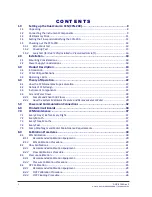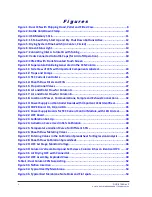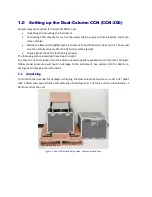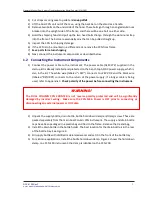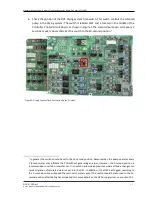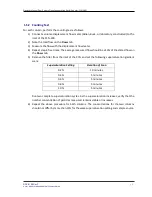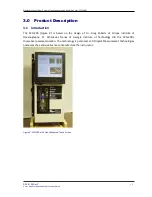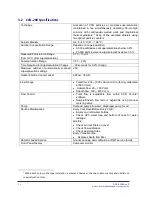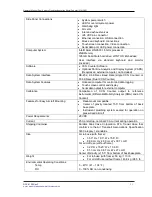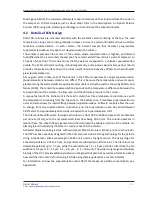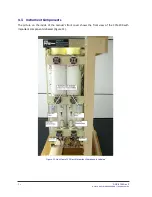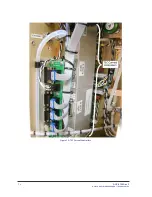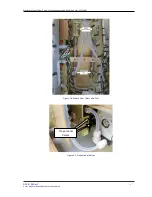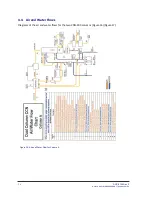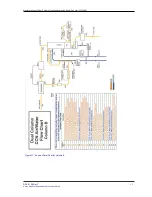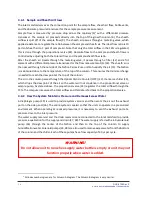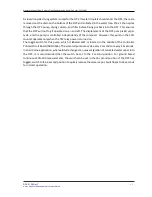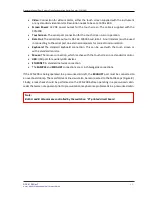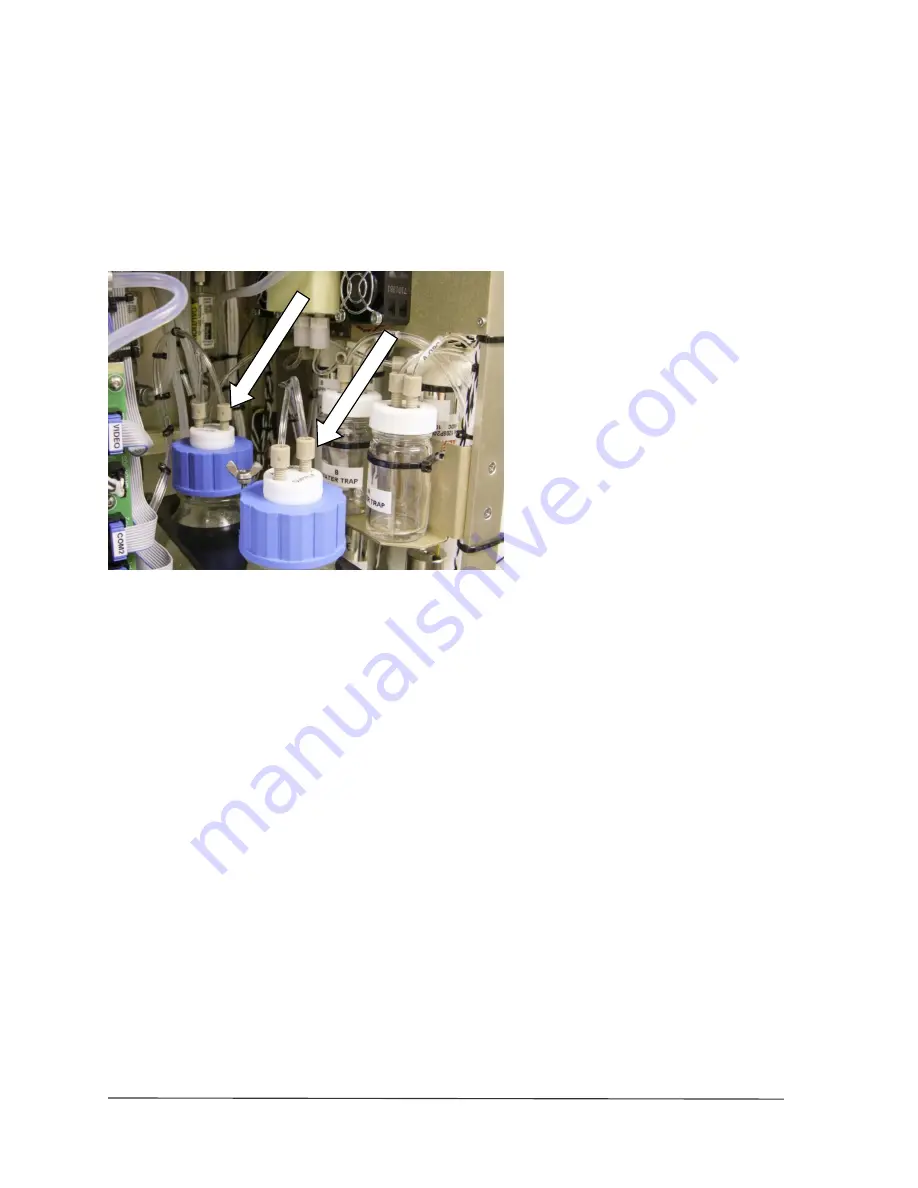
DOC-0128 Rev F
© 2017 DROPLET MEASUREMENT TECHNOLOGIES
1 8
2.0
Installation
The CCN-200 is designed for ground-based or airborne applications. The entire sampling system is
sealed on the CCN-200 so that it can be used on a pressurized aircraft as long as the sample air inlet
and outlet are at ambient pressure. For aircraft operation, the vents must be reconnected to the
bottle caps (Figure 8).
Figure 8: Vents Connected to Bottle Caps (for Aircraft Operation)
2.1
Mounting Considerations
Refer to Appendix D for mounting hole locations. The CCN-200 must always be mounted in an upright
configuration. The back panel is the structural component of the CCN-200 and is a 1/8-inch, 6061-T6
aluminum plate. All of the major internal components mount with stainless steel fasteners to this
aluminum plate, and critical mounting screws have helicoil inserts for strength.
For best performance, the environmental temperature of the CCN-200 should be kept as low as
possible without freezing. For more details, see section 3.3 “operating limits”.
2.2
Power Supply Considerations
The CCN-200 is designed to operate on 28 VDC power. Ground-based applications require a line
voltage to 28 VDC supply, which can be either a linear or switching supply. The capacity of the supply
should be at least 25 A. The CCN-200 may draw this current load for up to a few minutes at startup,
and then will typically draw 20 A in normal operation.
If there are high frequency spikes when the 400 Hz power is converted to 28 VDC, this can cause
problems with the CCN-200. If problems occur when operating the CCN-200 in an aircraft
environment, check the line voltage to 28 VDC supply. A 28 VDC aircraft cable with a filter is included
and should be used for aircraft operation.

